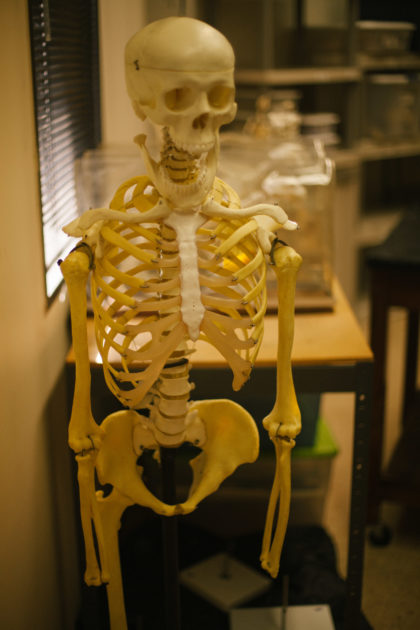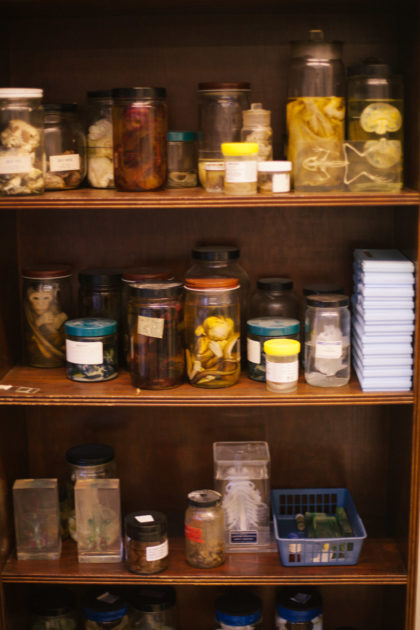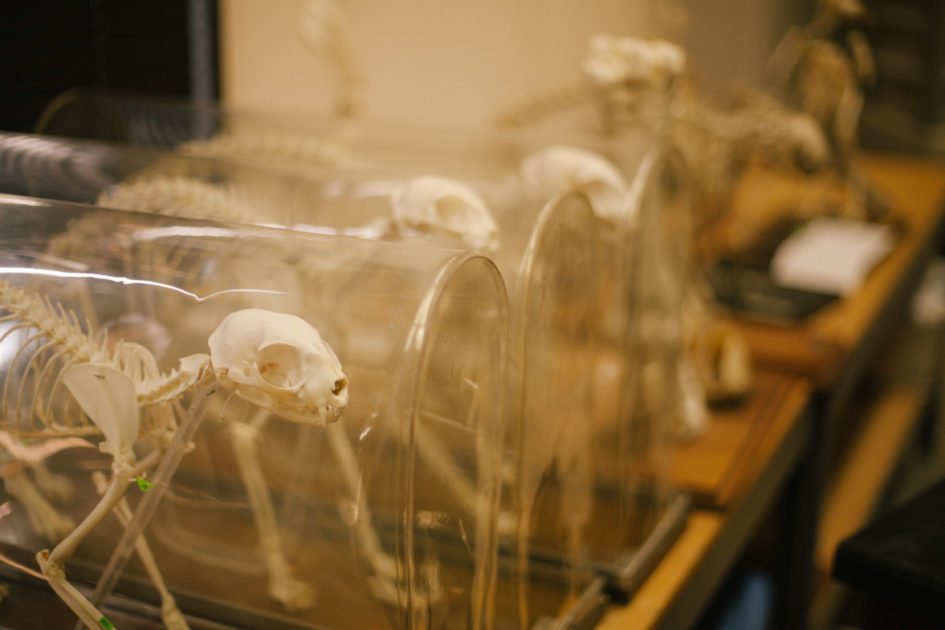Currently, there is one human cadaver on campus being used for scientific study. In previous years there have been two, a male and female, but the rotation schedule of the cadavers shifted, leaving Capital with just a male.
There are hopes that a new female cadaver will arrive sometime during the upcoming summer. The current male cadaver has been here for about two years, given to Capital on a long-term loan program by Ohio State University, and should remain on campus for another year or two.
With loan programs like these, most universities and colleges are able to keep a cadaver for about one to two years. Luckily for Capital, because it is a smaller school, it can usually get these cadavers from big universities for a loan period of at least two years.
According to Nancy Swails, professor in the department of biological and environmental sciences, there has been no real time limit for the cadavers’ stay at different campuses in the past, unless the families had given special requests for their return. Many cadavers are people who have decided to donate their body to science, or whose families have made the decision for them.
In most cases, cadavers are used for one year in a medical school. The anatomy courses will fully dissect them, and then the bodies will be cremated and returned to the families.
For those people that do donate their body to science and education, their family can choose a time frame for which the body can be used. Capital receives the cadavers of the families who choose to have a longer time frame. This is mainly because dissections can be very time consuming.
Fully dissecting a cadaver in class takes a couple of years because, most of the time, the students are not solely dedicated to that cadaver. If there was a dedicated gross human anatomy class along with the comparative anatomy class, the school would most likely be able to dissect the cadaver in one year.
Capital pays approximately $1,200 to $1,500 per cadaver. These costs are not necessarily for the body itself, but for other random fees that can vary, including the transport from Ohio State University to Capital, the transport to the funeral home and the cost of cremation.
The current cadaver is used for three classes: students from Human Anatomy and Physiology I & II use it solely for demonstrative proposes, while students in Comparative Vertebrate Anatomy actually dissect it.
Capital strives for an excellence in the education that they give students, and having the cadaver on campus expresses this.
“[Cadavers] are a necessity to ensure a strong learning experience for students in anatomy,” Swails said.
Although the learning opportunity that dissection of other vertebrae and models provides is substantial, it is only a small piece of the crucial learning exposure that students need. Models only provide examples from idealized situations and are very limited in their details.
For students, to be able to experience and understand actual biological structures in order to visualize them is extremely important to their learning. Models cannot convey the significance and amount of individual variation in organisms, Swails said.
With proper control of the humidity in the storage environment, the cadavers technically don’t have to be replaced due to the preservatives used in the embalming process. There are some institutions that keep cadavers around for twenty years or even more.
According to Swails, the educators and students that get to use the cadaver on campus are extremely grateful that the individuals and their families are willing to provide this significant learning opportunity for students.





